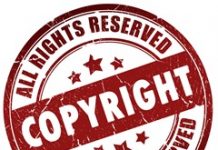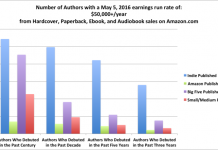 I was reading about the troubles Borders is having, wondering when the funeral oration will begin. Then came news of yet more indie bookstores closing, followed by news of publishers rejoicing over Apple’s ebook pricing structure and the advent of the iPad. All of which was capped by Amazon’s capitulation to Macmillan’s demand for an agency relationship and higher ebook prices.
I was reading about the troubles Borders is having, wondering when the funeral oration will begin. Then came news of yet more indie bookstores closing, followed by news of publishers rejoicing over Apple’s ebook pricing structure and the advent of the iPad. All of which was capped by Amazon’s capitulation to Macmillan’s demand for an agency relationship and higher ebook prices.
I’ve followed the publishing industry for 25 years. Some years are better than others but every year there are dire warnings about the demise of publishers — yet they keep on ticking. But the advent of ebooks as a real market force perplexes many publishers.
What threatens publishers is not ebooks but their lack of knowledge about their ultimate customer: the reader. Publishers have been forces of change in history, even though they themselves resist change.
Publishers need to leave the 18th century behind and enter the 21st century. To that end I propose the following radical notion: Forget Amazon, forget pricing problems, forget all troubles but one — your readers. First, recognize and accept that your customers in the 21st century are not the ebooksellers or distributors, not the Apples and Amazons, but the ebook buyers. Then become intimate with what makes some of your customers avid ebook buyers and readers and others just occasional buyers and readers.
Everything hinges on the consumer. A publisher can publish 10,000 books but if none sell, we know for whom the bell will toll. Publishers need to take a page from other industries and learn all they can about their ebookers. Discover why some book buyers are willing to pay a higher price for books at places like Barnes & Noble (books can generally be bought for less at Amazon) and why they are willing to pay for a membership. Learn why some book buyers buy 50 or more books each year, whereas others buy 1 or 2. Learn who your customers are!
Publishers shouldn’t interview a small, statistically valid sample; instead, they should do as massive a sample as possible. Unlike buying a car where the choices are relatively limited, book buying is wide open so a small sample, albeit statistically valid, will not give the kinds of insights publishers need.
There are lots of things to find out. Publishers need to know
* why some readers are buying both ebooks and pbooks but some are buying one or the other only
* what will cause a reader to switch from buying a pbook to buying an ebook
* how significant are price thresholds
* how many books are bought but not read
* why are they bought but not read
* consumer perceptions of quality defects and what must be improved
* how does a reader decide which book to buy and in which format to buy it
* is there resistance to ebooks and if so why
* what effect does interior design have on the decision to purchase or not purchase a book
* what effect does cover design have on the buying decision
* is a different decision-making process used for buying ebooks, hardcovers, and paperbacks
And the list of questions and areas to question goes on. But the idea is to know all there is to know about the book buyer.
Publishers are scrambling about like chickens without heads because they simply do not have the basic information they need in this transitional stage of publishing. Going from handwritten scrolls to moveable type didn’t require intimate knowledge of the consumer, but going from moveable type to ebook does require an intimate knowledge of what makes one person an avid book buyer and another person a casual book buyer.
With this type of in-depth knowledge, publishers can prepare focused programs designed to encourage book buying. My guess is that a publisher is better served by one reader who buys 50 books each year than by 50 readers who buy 1 book each year. It’s also my guess that the children of the 50-book buyer are more likely to become avid readers themselves than is the child of the person who buys 1 book each year.
Publishers need to know and understand their ultimate client – the book buyer – in much more intimate terms than they do now. They also need to accept that in the long-term their success will lie in ebooks, not pbooks. Failure to understand and accept leave publishers on the road to oblivion as the ebook revolution firms its grasp of the market.
Editor’s Note: Rich Adin is an editor and owner of Freelance Editorial Services, a provider of editorial and production services to publishers and authors. This is reprinted, with permission, from his An American Editor blog. PB


































The best proposal yet, Rich.
A strategy of throwing random stuff at consumers, to see what sticks, is always beaten out by asking customers, “What do you want me to throw?” Making customers aware that you are honestly listening, questioning, debating, and responding to them is as important. The publishers who do that will win the day (or have the sense to close their doors and cut their losses when they realize they can’t do what the consumer wants them to do).
Thanks, Steve. I am glad you like my proposal. It is always a pleasure to get praise for an idea from someone whose views you respect.
Excellent article. It always amazes me when I read that we- the book buying consumer- are not considered customers as far as publishers are concerned. The business model where DISTRIBUTERS are their customers will not serve them well in the digital age.
I think that if you went to an 18th century businessman and told him ‘hey guess what, what if you didn’t need the middleman, and could sell directly to the customer, no matter where in the world s/he might live?’ they would think this was a splendid idea, milk it to the max and retire a millionaire. It’s just that the publishing industry is so entrenched in preserving their old business model that they fail to see the potential in the new one.
This makes way to much sense. And as we all know, the BPH don’t have any common sense.